What are binaural beats?
What are delta beats?
What are theta beats?
What are alpha beats?
What are beta beats?
What are Gamma Beats?
Why we need music in the classroom
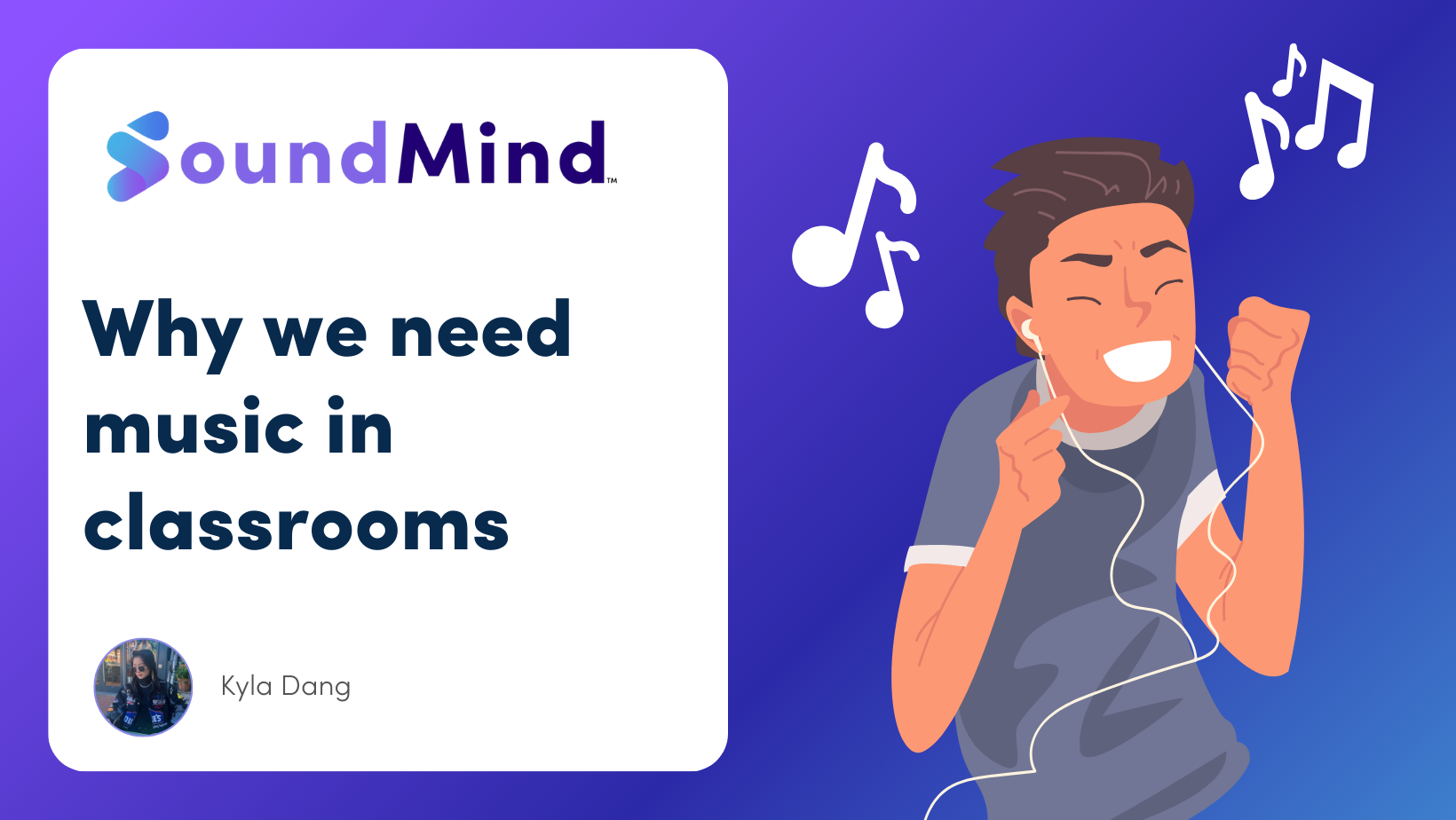

At SoundMind, we’re pioneering mental health care with the power of sound. Music is powerful tool that can not only alter or boost our mood, but has physiological effects on the body. It’s common to see students listening to music while studying, but it can actually be helpful in learning environments (aka, the classroom).
Music affects many parts of our brains. Most notably, it increases activation in these specific areas:
There are many reasons why music can be beneficial in learning. Using music in the classroom can increase learning, retention of information, improve focus, and motivate students.
Calming music as well as binaural beats can really help students in the classroom and lower negative feelings associated with education. Specifically, alpha, beta, and theta binaural beats all have positive effects on focus, reasoning, learning, and stress reduction. Using these powerful sounds while students are taking tests, doing work, or studying can be really helpful in boosting their education.
With SoundMind’s binaural beats, students can use the SoundMind Hub to choose whichever binaural beat fits their needs. Plus, it gives educators an easy way to implement quiet time where students focus. During tests, teachers can also put on some calming classical music or a soundscape as background noise to calm students and help them focus. Additionally, encouraging students to listen to non-distracting music while studying can help them retain information for longer, motivate themselves, and have fun while learning.
Music is a versatile and powerful tool that can be used in the classroom and at home to increase memory retention and focus, stimulate the brain, decrease stress, and make studying fun. The power of binaural beats can boost these effects even more by changing brain frequency to a desirable one, turning procrastination into motivation. Try implementing music into every day tasks, both in and out of the classroom, and see how it boosts your brain!
Have you tried out our research-backed binaural beats on the SoundMind app? Download for free here!
Thank you for reading “Piece of Mind”! If you liked this post, share it with a friend and help us increase our positive impact on Gen-Z mental health 🙂
Subscribe to receive blog updates!
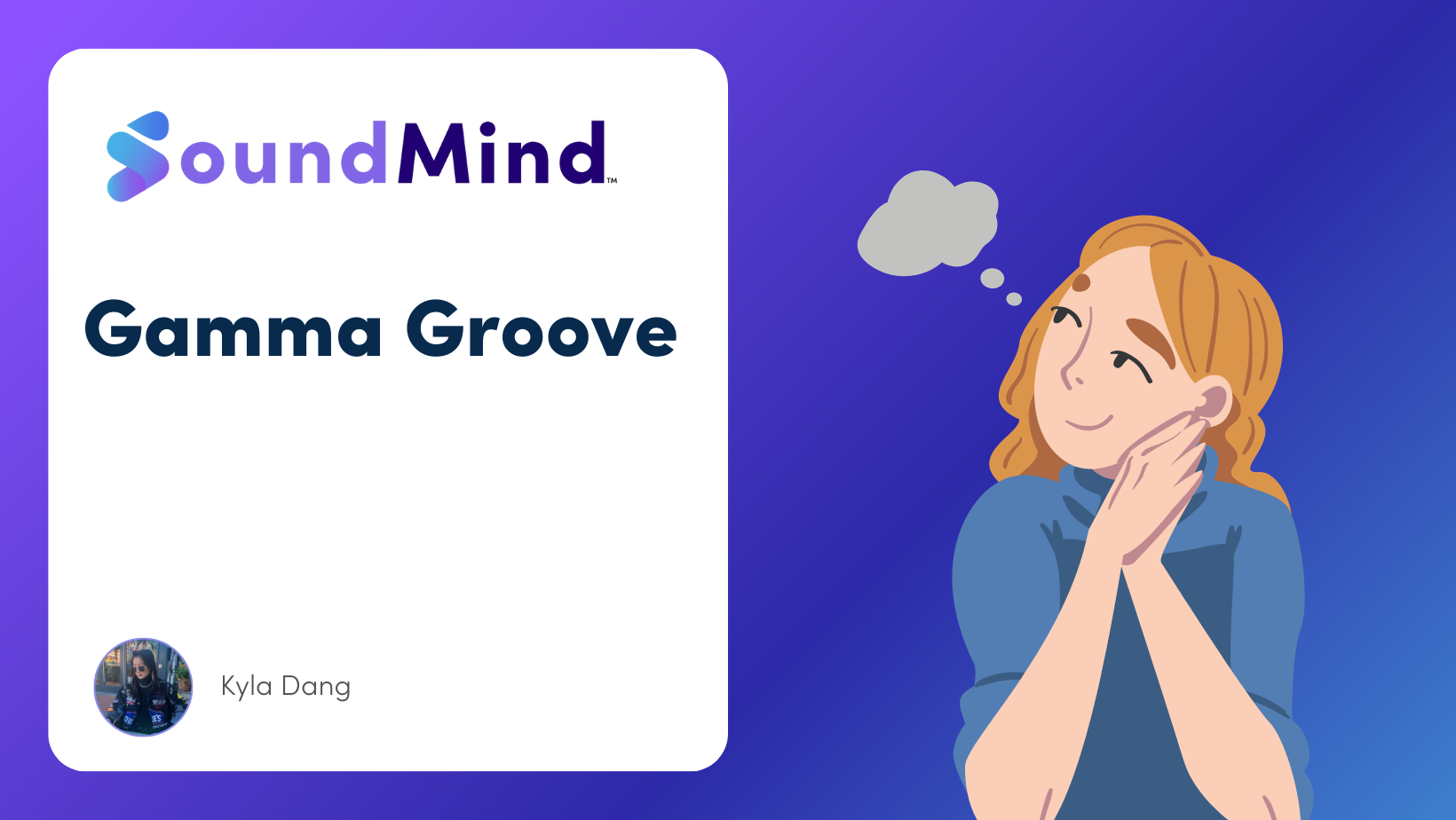

Do you ever get into the flow of something and feel that buzz in your body because you feel unstoppable? Like nothing can get in your way, and that you’re capable of anything in that moment? Many of us chase that flow state, because it’s when things get done—and you feel good about it the entire time. Unfortunately, we can’t always be in this state… but binaural beats can help you get there!
Gamma beats are in the 30-100 hertz range and mimic how your brain is operating at its highest level. By using brainwave entrainment techniques and different frequencies, sound can trick your brain into adopting these frequencies to power your brain. Here are some benefits of gamma brainwaves in particular:
Using gamma binaural beats when analyzing, doing detail-specific work, and information processing can help make those tasks come easier to you, and maintain that great flow state of productivity and learning. It’s also been shown that high levels of gamma brainwave activity are found in individuals who are more receptive, empathetic, and mindful—all great qualities that showcase the power of the brain’s default mode network, or DMN. This is a cluster of brain regions that is most active when engaging in introspection, empathy, and thoughts of the past/future, all of which require a higher level of thinking.
Gamma binaural beats mimic your brain at its highest level, and can help you power through intense, high-level tasks through improved cognitive function and memory recall. You may find that tasks are easier when listening to gamma binaural beats, and that it might be easier to achieve that unstoppable work flow state. If you’re curious to know what it’s like, try out some of our specially-curated binaural beats in the SoundMind app, and let us know what you think of them! It just may be the push you need to become the most productive version of you.
Have you tried them out on the SoundMind app? Download for free here!
Thank you for reading “Piece of Mind”! If you liked this post, share it with a friend and help us increase our positive impact on Gen-Z mental health 🙂
Want to learn more?
➡️ Delta Beats
➡️ Theta Beats
Subscribe to receive blog updates!
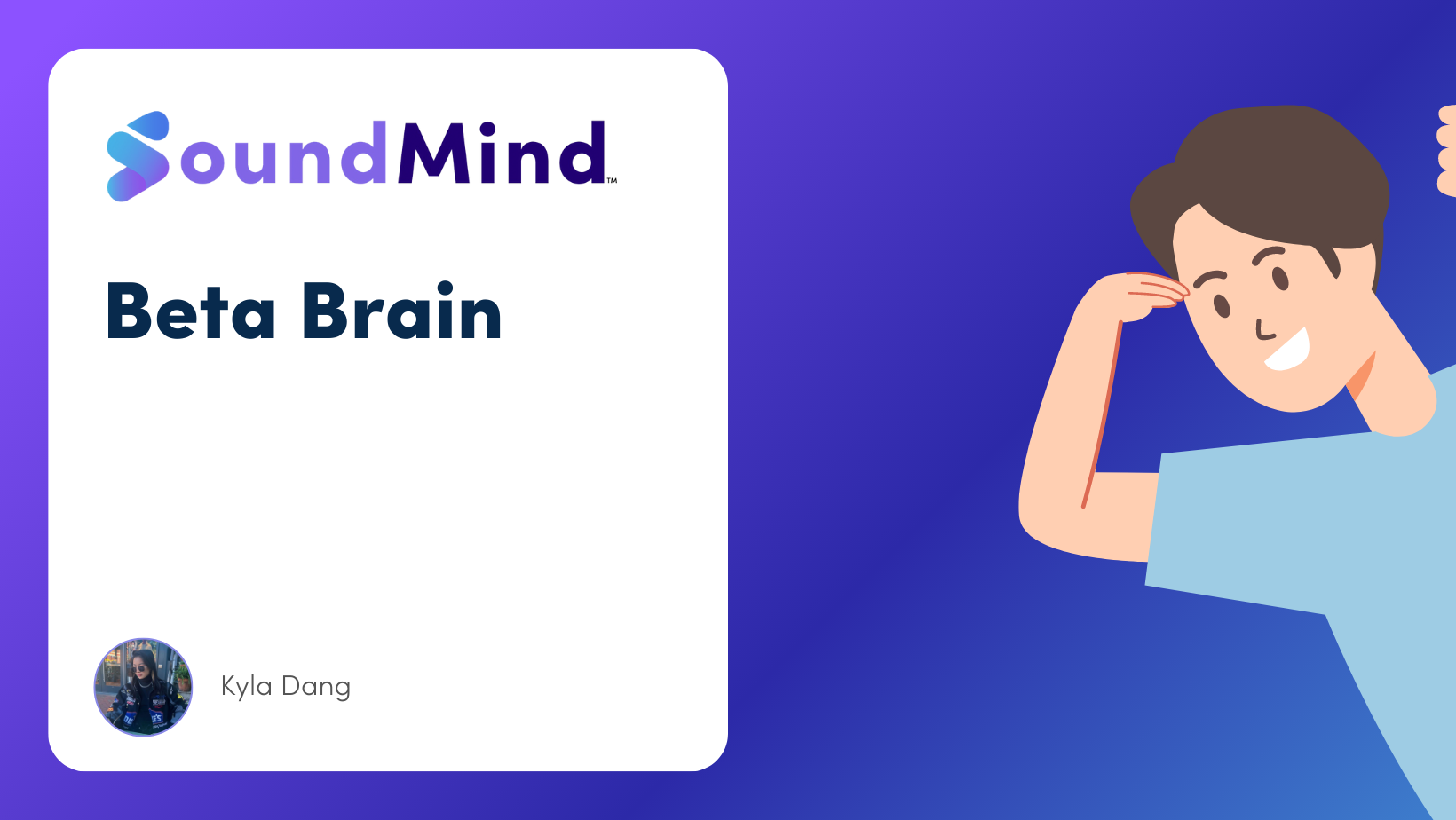

What do all good spy movies have in common? From 007 in James Bond films to Ethan Hunt in Mission Impossible, all the protagonists are characterized by high-level alertness, extreme attention, high level cognition, analytical thinking, and on-the-fly problem solving (because something always has to go wrong). My suspicion? They’re all listening to beta binaural beats during their missions.
All jokes aside, binaural beats really can have an effect on your cognitions—although they won’t turn you into an international superspy. This study shows promise that binaural beats can actually help calm anxiety, along with other specific benefits depending on which frequency is used.
Beta binaural beats may help with a variety of things, including enhanced cognitions, increased attention, and improved energy stimulation. These operate within the 14-30 hz range, and mimic our fastest brainwaves. Your brain naturally cycles through different brainwave types throughout the day, depending on what you’re doing at a given moment. Specifically, our brain generates beta waves when thinking critically and paying attention, so beta binaural beats mimic these brainwave patterns to encourage a similar effect.
Any time that you’re doing a detail-oriented task, or need to stay vigilant, is a good time to put on some beta binaural beats. By mimicking your brain’s natural patterns and cycles, these binaural beats encourage you to more easily move into a concentration state. It won’t work like magic, but it’s a good way to keep your energy stimulated—helping you get through whatever you need to finish.
Beta binaural beats operate in the 14-30 hertz range and can promote cognitions, stimulate energy, and positively affect analytical thinking. By having an increase in attentiveness, your brain is more adaptable and can work through problems faster, while also remaining detail-oriented. You can check it out for yourself on the SoundMind app, where we tailor a large selection of binaural beats to your current mood or desired mood state. Don’t underestimate the power of sound!
Have you tried them out on the SoundMind app? Download for free here!
Thank you for reading “Piece of Mind”! If you liked this post, share it with a friend and help us increase our positive impact on Gen-Z mental health 🙂
Want to learn more?
➡️ Delta Beats
➡️ Theta Beats
Subscribe to receive blog updates!
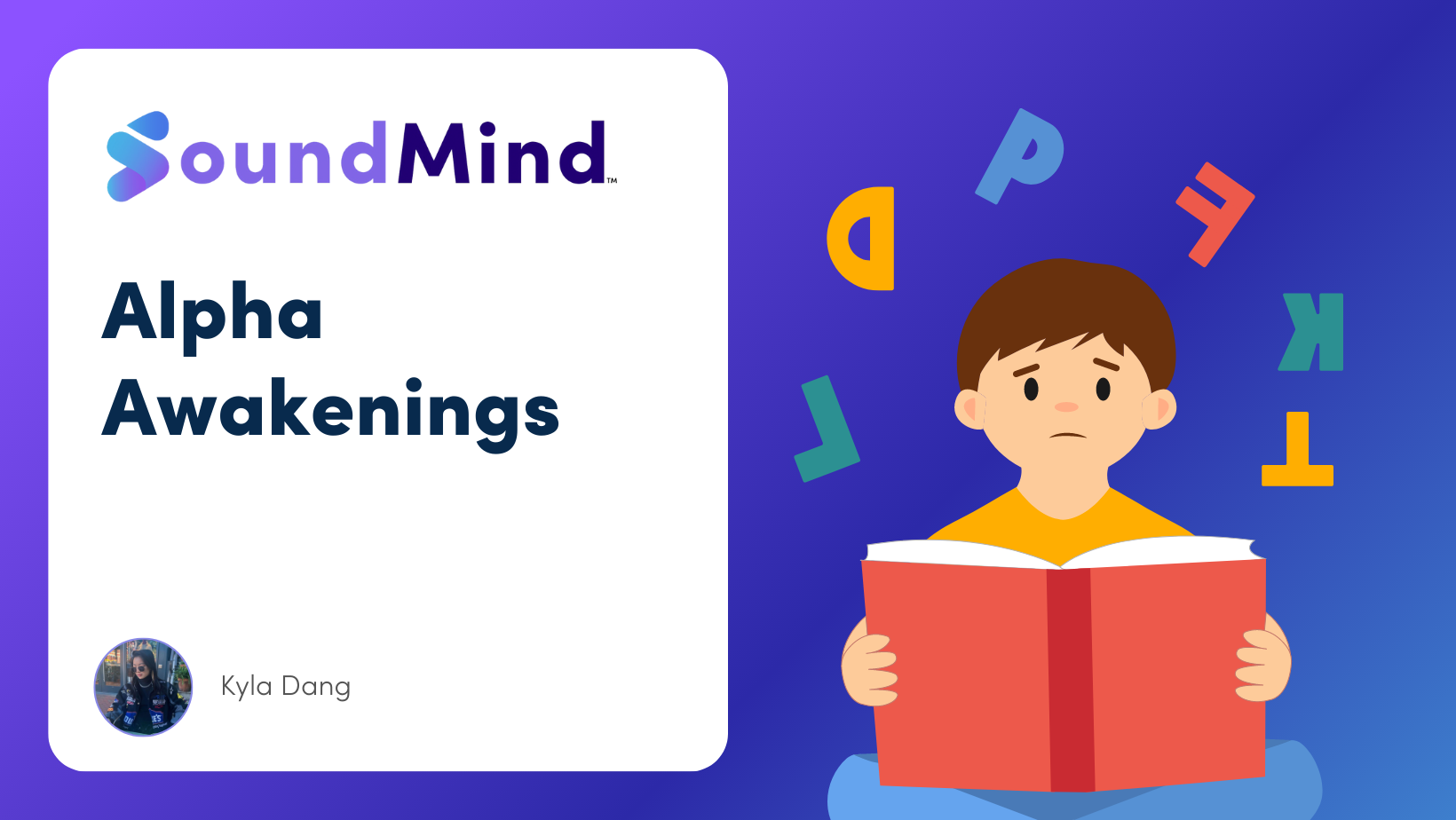

Need to focus, but just have too much brain fog to concentrate? Do you have a big exam coming up that you aren’t motivated to study for? By harnessing the power of sound, alpha binaural beats may be able to help you get over that slump and get you into a learning flow state.
Having confidence in yourself and knowing you’re going to succeed is a big motivator in wanting to engage in a task, and learning is no different. Oftentimes students struggle with negative self-talk, in which they constantly project themselves in a state of negativity which eventually leads to burnout or giving up. However, alpha binaural beats in the 8-14 hertz range have been linked to promoting positivity, as well as concentration. Listening to alpha binaural beats when studying or diving into a daunting task won’t eliminate your negative thoughts completely, but it may help motivate you a little more and get the ball rolling. And sometimes, just a little push is enough to get you all the way through.
Just like anything else, sound therapy isn’t meant to be a one-stop, fix-all solution to the problems we face in everyday life. What can be said, however, is that the current scope of research on binaural beats is promising, although it will require more study to understand the full extent of the power of sound.
A favorite of mine is to use alpha beats when I have a long list of tasks piling up at work—in fact, I’m listening to SoundMind’s “Align Your Focus” track while writing this blog post! Binaural beats won’t affect everyone the same way, but I know for me it really helps put me in a “just get it done” state of mind. Because I listen to alpha binaural beats during certain scenarios, when I hear one, it triggers me to want to enter that flow state that I found previously.
Alpha binaural beats in the 8-14 hz range can promote concentration/focus, positive thinking, and learning flow states when used in conjunction with associated tasks. This positive thinking can be invaluable to students, especially those who struggle with confidence in starting their work and having trust in themselves that they truly are capable of succeeding. Educators may see a difference in student mentality with regular use of alpha binaural beats—which is why we have personalized suggestions for teachers in the SoundMind Hub, so they can help their students harness the power of sound!
Have you tried them out on the SoundMind app? Download for free here!
Thank you for reading “Piece of Mind”! If you liked this post, share it with a friend and help us increase our positive impact on Gen-Z mental health 🙂
Want to learn more?
➡️ Delta Beats
➡️ Theta Beats
Subscribe to receive blog updates!
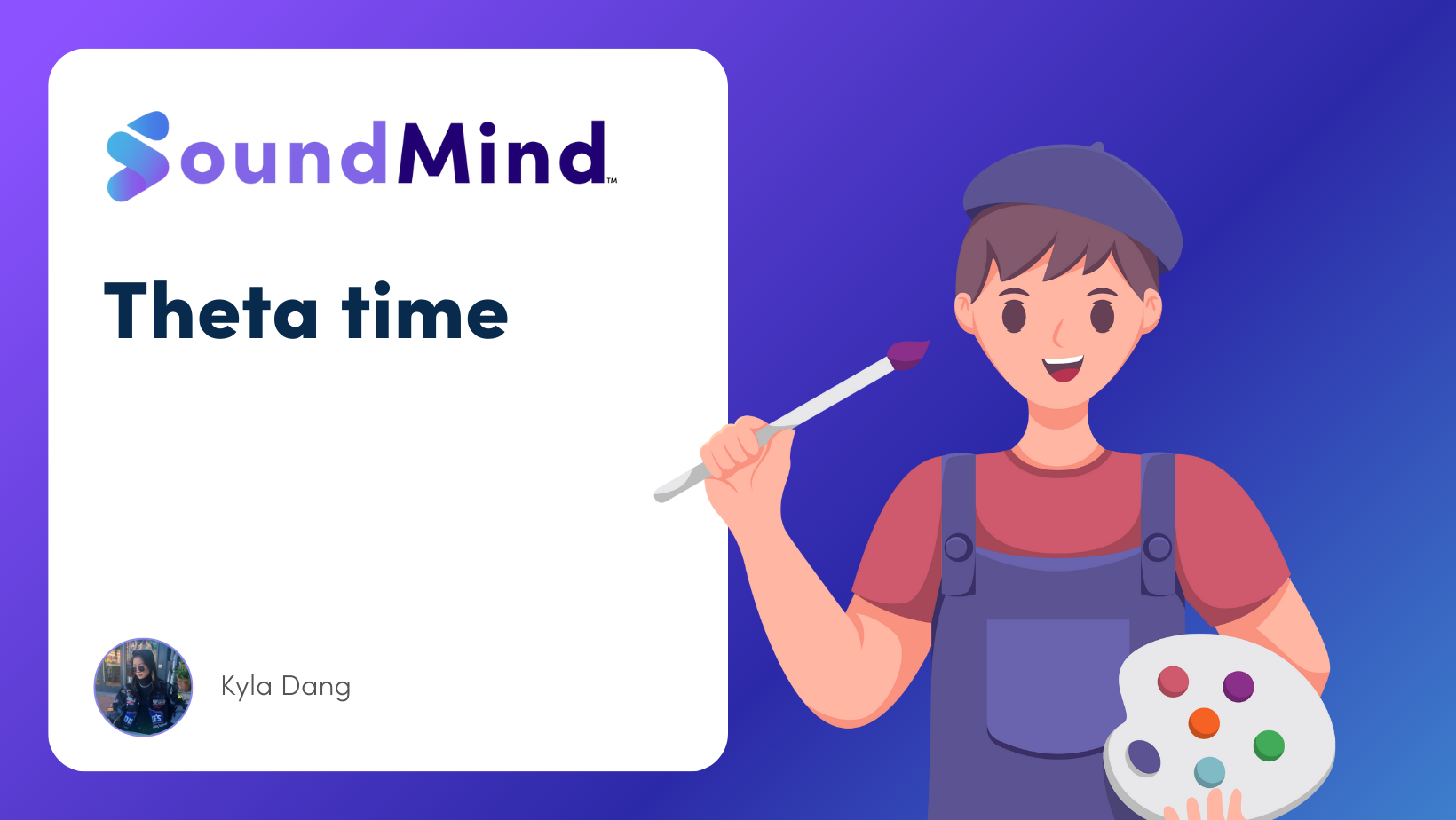

The digital meditation industry is currently worth more than $500 million USD, and is growing as a plethora of mindfulness apps continue to spring up. However, is it really a solution towards guided mindfulness, or do they just pose another distraction?
Screens make it hard to concentrate by constantly projecting information and visuals to you. Some may even feel that a rise in digital distractions is bombarding our brains—and not in a good way. A constantly stimulated brain will find it difficult to slow down enough to engage in meditation or to even just mentally relax. But binaural beats may be able to help.
In an era of constant information overload, it can be a challenge to find space and peace away from digital entities. Theta waves in particular can be helpful in establishing this peace of mind, by mimicking how the brain operates when you’re in an extremely relaxed headspace—or when you’re dreaming. Theta waves are in the 4-8 hertz range, and binaural beats will use audio cues to establish this in your brain.
Just like any other binaural beat, all you need is a pair of headphones (or two earbuds). To really harness theta binaural beats, put them on when you need to open your mind and clear your thoughts—perfect for getting into a creative groove or begin meditation. A personal favorite is listening to theta beats when beginning breathwork techniques—pairing theta beats with mindfulness practices allows me to ease myself into the calm that I want to achieve. For the non-meditators, thetas can be used to just take a moment to relax and clear your head.
Theta waves in the 4-8 hertz range are associated with meditation, relaxation, and creativity. Pairing these binaural beats with mindfulness techniques or using them to escape the digital trap by clearing your head can be helpful in achieving calmness when needed. They may also have a hand in promoting creativity by removing mental distractions!
Have you tried them out on the SoundMind app? Download for free here!
Thank you for reading “Piece of Mind”! If you liked this post, share it with a friend and help us increase our positive impact on Gen-Z mental health 🙂
Want to learn more?
➡️ Delta Beats
Subscribe to receive blog updates!
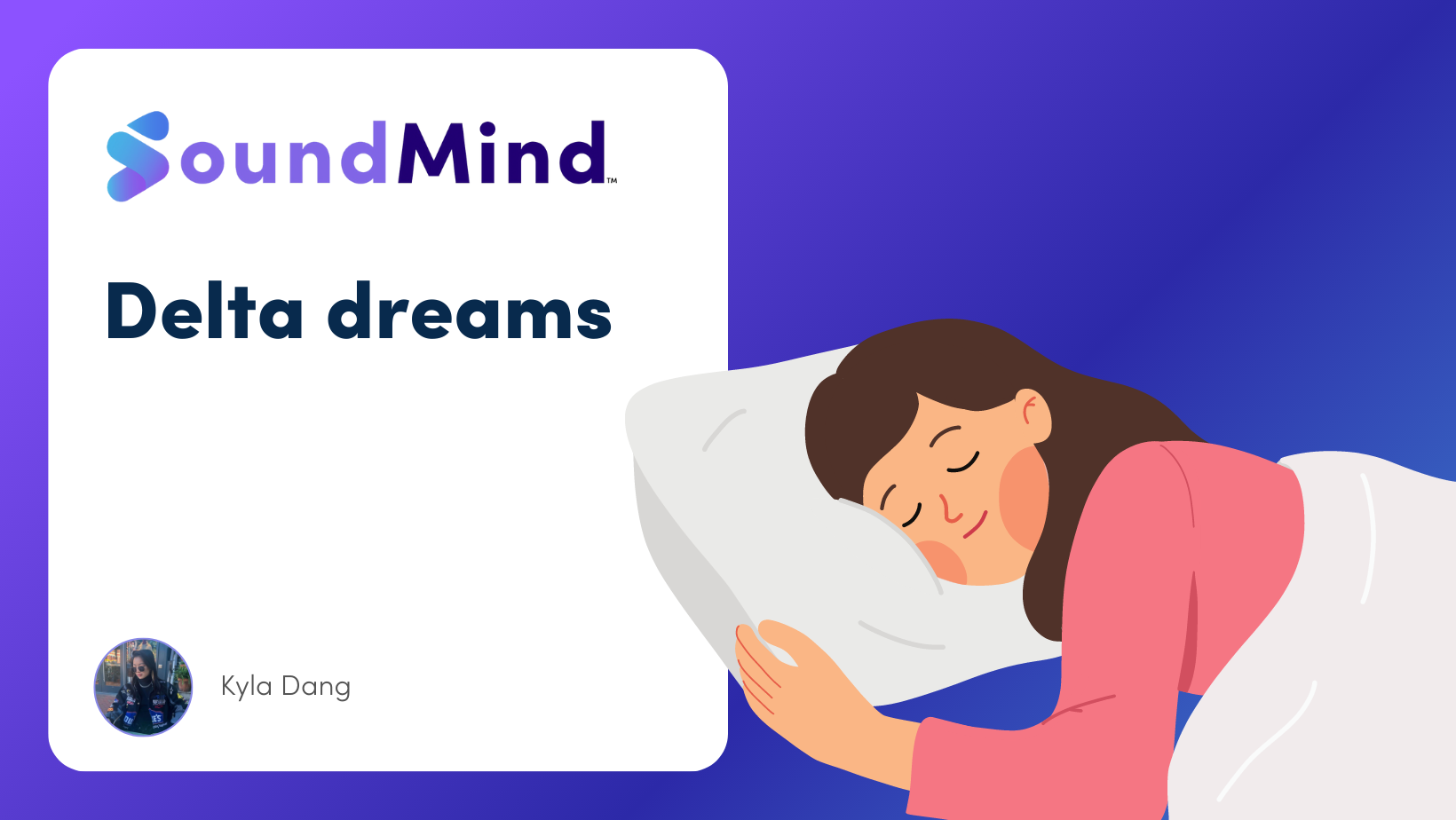

How many of us are actually able to go to sleep when we want to? Although it’d be nice to have a complete absence of thoughts and no running ‘to-do’ lists plaguing our minds before bed, it’s unfortunately not how it goes most of the time. However, there’s been research emerging that ‘sound therapy’ can actually help with promoting deep sleep and stress relief, without needing anything else but headphones and a phone.
EEG brain scans have revealed that delta waves are most prevalent in stage 3 of the sleep cycle, also known as the ‘deep sleep’ stage. These waves are in the 1-4 hertz range. Using this information, delta binaural beats stimulate the brain to act similarly to how it does in stage 3, promoting deep sleep and relaxation. By doing so, delta beats can keep your brain in a deeper sleeping state which leads to a more restful sleep!
Playing a different frequency in each ear leads to a phenomenon called ‘brainwave entrainment’, allowing sound to adjust the way your brain is operating and achieve desired results. Studies have shown that delta binaural beats are most effective in promoting deep sleep, stress relief, and meditative states. Some have even found that they might have an application in pain relief for patients recovering from injuries or surgery, although the full extent of this is not yet known.
In the SoundMind app, there’s a lot of different options for binaural beats and visual beats, which are short-form videos we created that pair with the audio. All you have to do is put on some comfortable headphones (they have to play in both ears), lay in bed, and turn the track on. Relaxing with delta binaural beats can put your mind at ease and promote a relaxative state. A good night’s sleep isn’t a dream—delta binaural beats can help make it a reality!
Have you tried them out on the SoundMind app? Download for free here!
Thank you for reading “Piece of Mind”! If you liked this post, share it with a friend below and help us increase our positive impact on Gen-Z mental health 🙂
Want to learn more?
➡️ Theta Beats
Subscribe to receive blog updates!
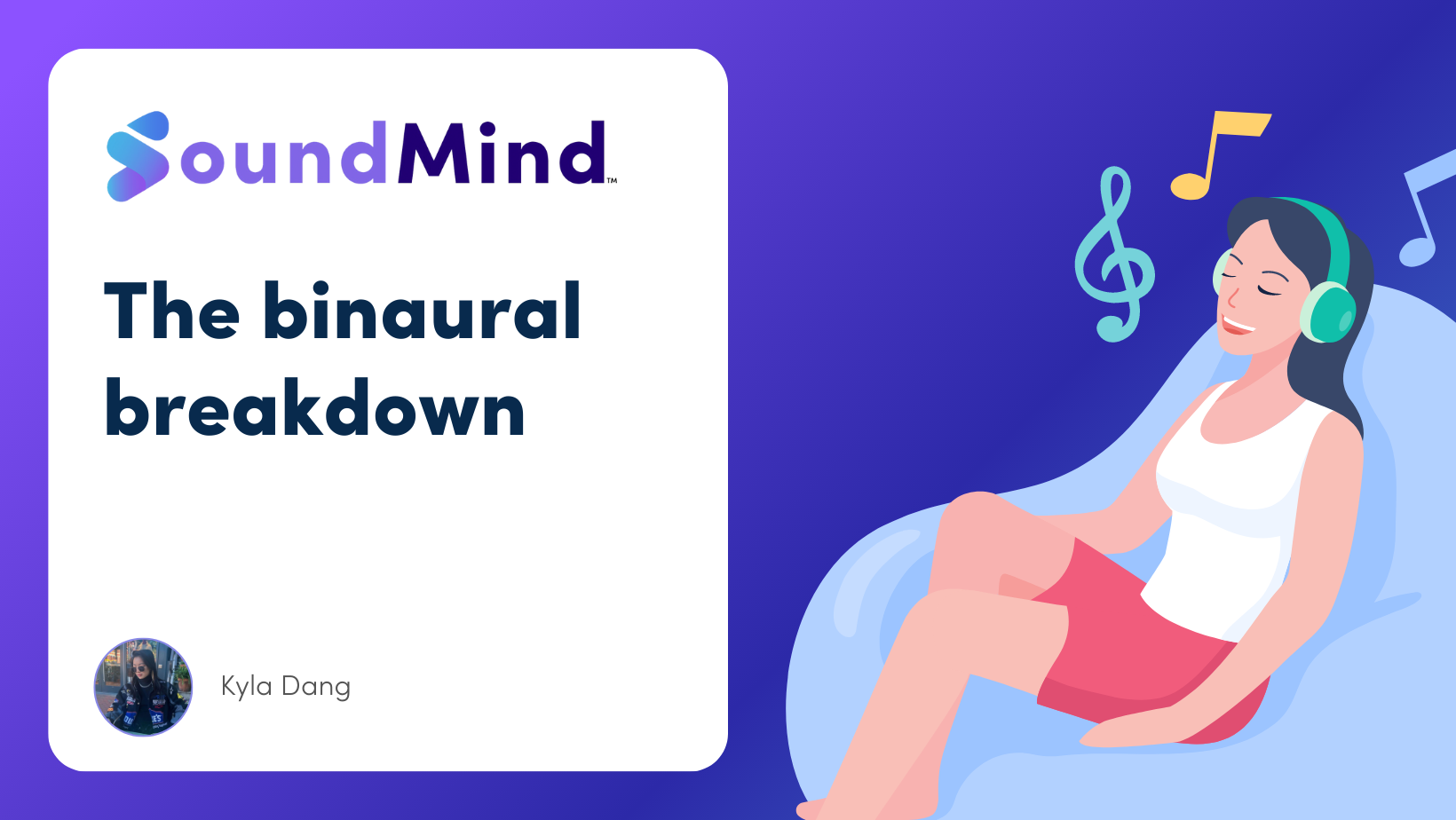

We’ve all heard the phrase “music heals”, but does it actually do anything to our brains? Recently, there’s been a rising interest in binaural beats, ASMR videos, frequency music, and white noise that is being used to enter a ‘flow state’, relax, or focus. SoundMind’s app is built off the functionality of binaural and visual beats, but what exactly are they?
First, the technique of “brainwave entrainment (BWE).” When our brains hear two differing frequencies, it adjusts according to the difference in those frequencies—for example, hearing 40 hz and 45 hz will lead our brain to hear a 5 hz frequency. We can use this phenomenon to alter our brain waves and create a desired state.
Although there is a rise in search queries for ‘40 hertz’ specifically, there are many other categories of frequencies that can be used to enter a desired brain state.
Delta, theta, and alpha beats are your best bet. These range from 1-14 hz, and are associated with deep sleep, meditation, relaxation, and stress reduction. Used in the right context, alpha beats in particular can actually help you enter that coveted ‘flow state’ to get your creativity going. And theta waves have been shown to decrease symptoms of anxiety when used regularly over the course of a month.
For times you need to really pay attention, problem solve, and be alert, beta and gamma beats are the best choice. These range from 14-100 hz and can be used while working, studying, or doing anything analytical. Research has suggested that they may be able to boost attention span and mental vigilance on tasks.
Although still being researched, studies show that binaural beats and brainwave entrainment are a promising avenue to supplement daily tasks and assist with certain mood states. SoundMind believes that the power of sound can be used for therapeutic purposes, and with an increasing interest in ‘music therapy’ from the general public, it appears that others believe in it as well. Can music really heal? We think so.
Have you tried them out on the SoundMind app? Download for free here!
Thank you for reading “Piece of Mind”! If you liked this post, share it with a friend and help us increase our positive impact on Gen-Z mental health 🙂
Want to learn more?
➡️ Delta Beats
➡️ Theta Beats
Subscribe to receive blog updates!